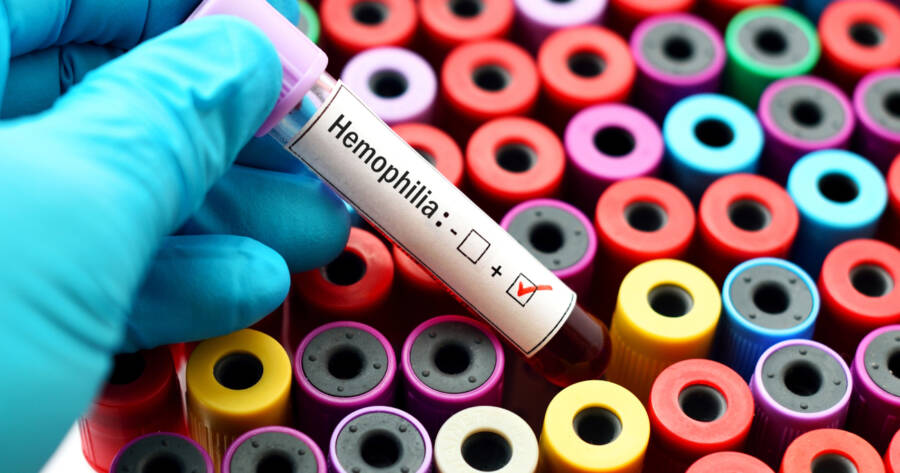Hemophilia, a rare blood disorder, can sometimes show symptoms that are easy to overlook. If you’re a parent who’s concerned about your kids’ health, you can spot early hemophilia symptoms with an online search right now.
When it comes to our children’s well-being, knowledge is power. Understanding potential health risks, like hemophilia, can make a significant difference. Thanks to online resources, it’s never been easier to be proactive about our children’s health.
Unusual Bruising Patterns
Children play, and bruises are a part of growing up. However, if you notice bruises appearing without a clear reason or in odd places like the inner arms or waist, it could be a sign. Children with hemophilia might bruise more easily.
It’s essential to pay attention to these patterns. Delving into online resources can help you differentiate between regular bruises and potential hemophilia signs.
Extended Bleeding From Small Cuts
A tiny cut or scratch might bleed a bit, but it should stop after a few minutes. If you find that your child’s minor injuries continue to bleed for an extended period, take note.
Hemophilia affects the blood’s ability to clot, which can result in prolonged bleeding. Knowing about these signs can help early detection. To understand more about how hemophilia affects blood clotting, a quick online search can be informative.
Swelling and Pain in Joints
Swollen, painful joints can be an indicator of internal bleeding, especially around the knees, elbows, and ankles. If your child complains about joint pain without a clear injury or reason, it’s essential to consider hemophilia as a possibility.
This internal bleeding can damage the joints over time. Exploring more about hemophilia online will shed light on how and why it affects joints in this manner.
Frequent Nosebleeds
While occasional nosebleeds can be due to various reasons, frequent and prolonged nosebleeds might indicate hemophilia. If your child’s nosebleeds last longer than 10 minutes or occur without any known trigger, it’s worth consulting a doctor.
Getting more information about hemophilia online can help you discern between common nosebleeds and those linked to this condition.
Blood in the Urine or Stool
It’s crucial to regularly check for any signs of blood in your child’s urine or stool. This could be an internal sign of hemophilia.
While there could be other causes for these symptoms, it’s a good idea to be vigilant and consult with a healthcare professional. Knowledge is always beneficial, so researching hemophilia’s impact on internal organs online can provide more insights.
Excessive Bleeding After Vaccinations
After vaccinations, a little soreness or a tiny spot of blood is typical. However, if your child bleeds excessively from the injection site, it could be an indication of hemophilia.
Noticing and addressing such symptoms early can lead to better management and care. By delving into online studies and information, you can grasp why hemophilia might cause such reactions.
Delayed Wound Healing
If your child’s wounds or cuts seem to take much longer to heal, it could be due to hemophilia. The disorder affects the clotting process, which in turn can slow down the healing process.
Monitoring how your child’s wounds recover can offer crucial clues. Taking some time to research hemophilia online will give you a clearer understanding of its effects on wound recovery.
Difficulty with Physical Activities
Children who have hemophilia might experience difficulty or hesitation during physical activities, which isn’t typical of their peers. They might refrain from participating in certain sports or playground games, not necessarily due to joint pain, but because of an innate understanding of their body’s fragility.
Such reluctance can be an indirect sign that they’re trying to avoid injuries or pain that might result from bleeding episodes. Observing any significant changes in your child’s eagerness to participate in physical activities can be revealing.
Gum Bleeding
While occasional gum bleeding during vigorous brushing or flossing might not be uncommon, consistent gum bleeding, especially during regular oral care or after eating certain foods, could be an indicator of hemophilia. This is because the blood vessels in the gums might be affected by the reduced clotting factor, leading to easier bleeding.
Should you observe such consistent signs, it’s vital to consult with a dentist or pediatrician. To further understand the correlation between gum health and hemophilia, diving into online research can offer a wealth of knowledge.
Keep Hemophilia In Your Sights
While hemophilia is a rare condition, being aware of these subtle signs is essential for parents. Early detection and intervention can make a world of difference in managing the disorder.
Encouragingly, with the vast resources available online, understanding and learning more about hemophilia is just a few clicks away. By staying informed and proactive, you ensure the best possible care for your child.
